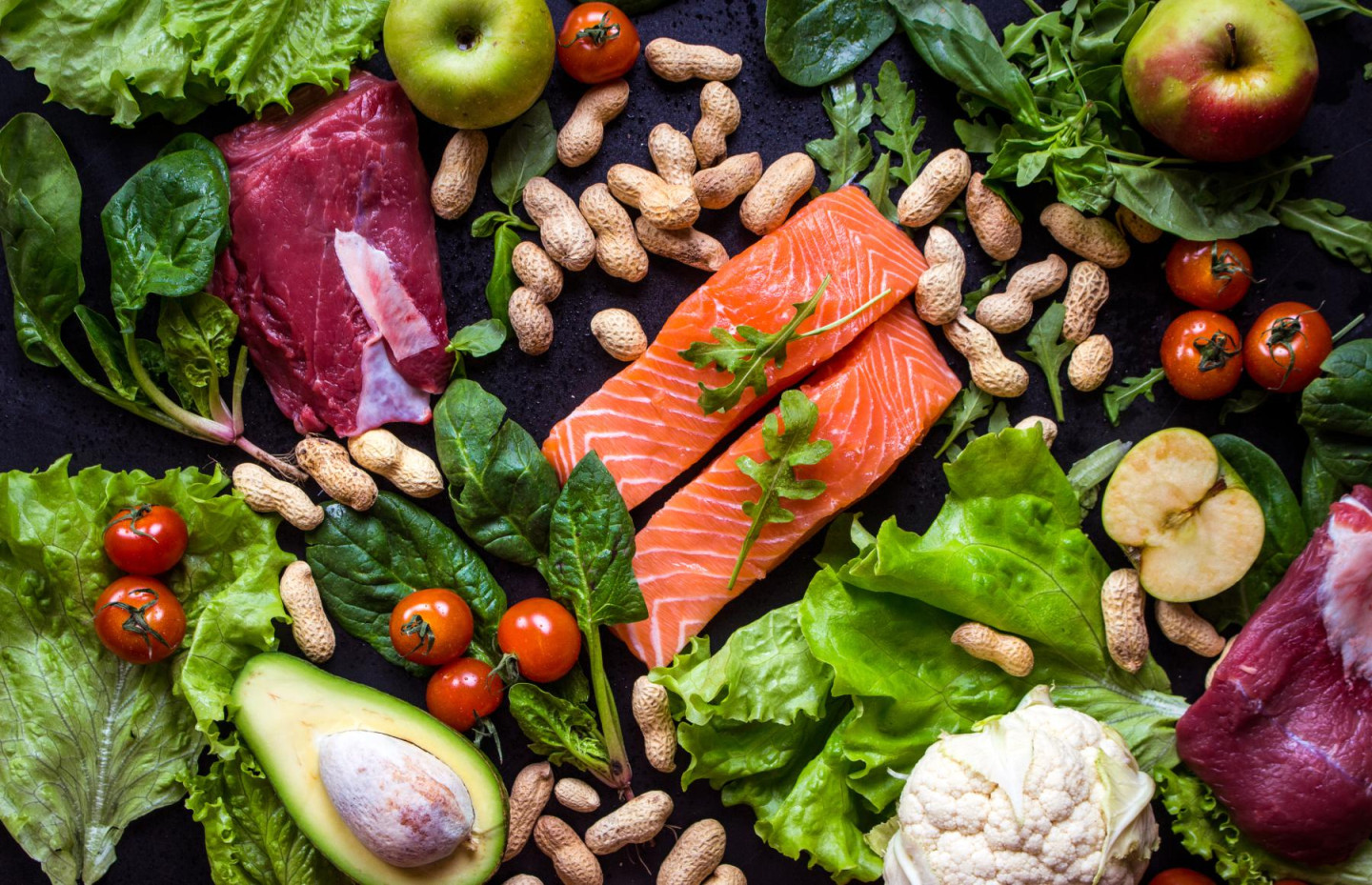
Endocrinologists distinguish two types of iron – heme (part of hemoglobin) and non-heme. Heme is absorbed much better and is found mainly in meat, while non-heme is found in plant foods.
- The role of hemoglobin
- Foods that increase hemoglobin
- Products that lower hemoglobin
- Nutrition rules
- Expert comments
Elena Ostrovskaya, endocrinologist, specialist in preventive and anti-age medicine at the European Medical Center (EMC);
Andrey Timofeev, nutritionist, endocrinologist, expert doctor at the Semeynaya network of clinics.
What you need to know about hemoglobin and its role in the body
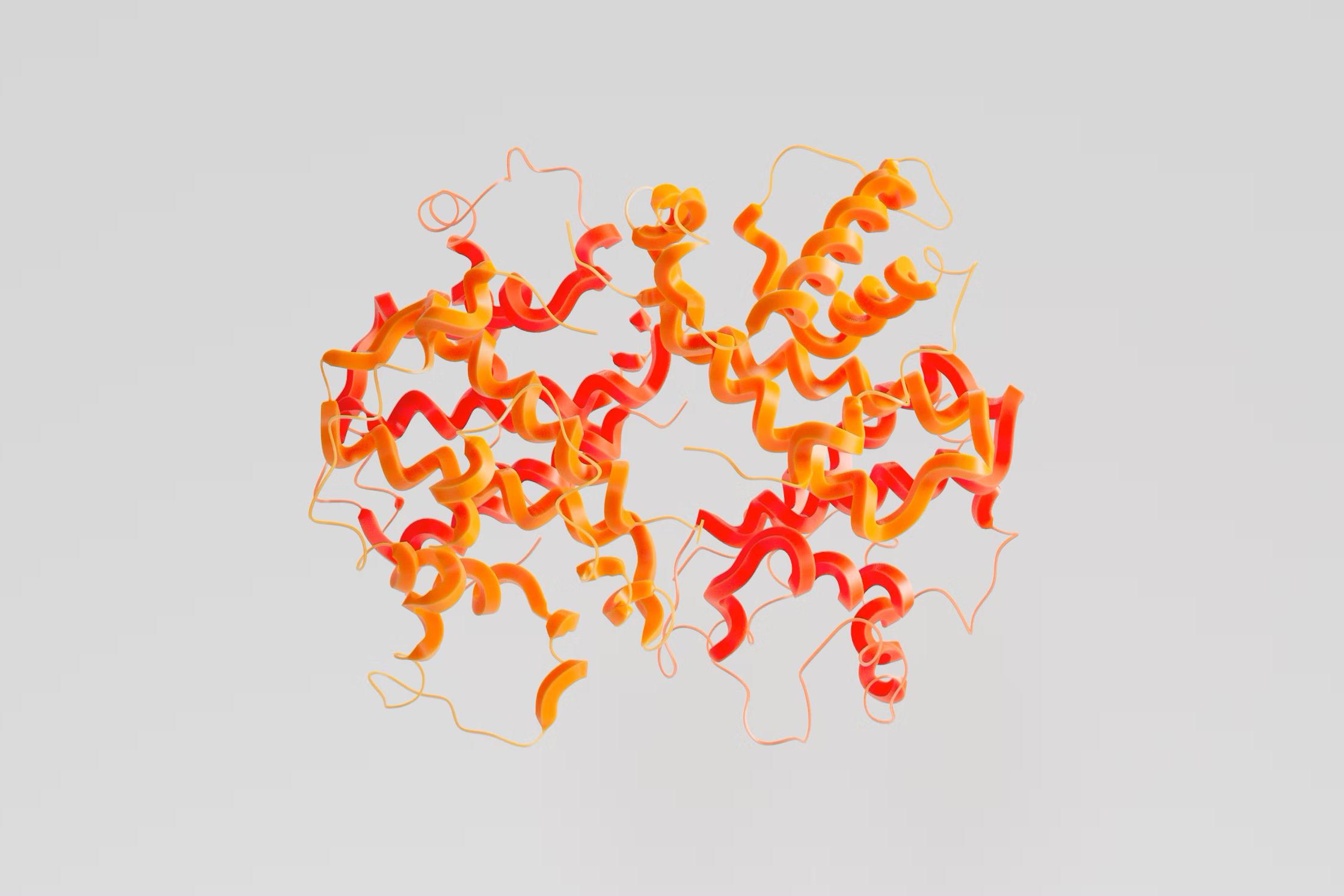
Structure of human hemoglobin
Hemoglobin is an iron-rich protein found in red blood cells (erythrocytes). It is responsible for transporting oxygen throughout the body. A decrease in its level can be associated both with the individual characteristics of a person or poor nutrition, and with many diseases, primarily iron deficiency anemia (1). Lack of hemoglobin affects all functions of the body, leading to oxygen starvation of internal organs, fatigue, apathy, memory impairment and sleep problems.
Why does hemoglobin decrease
Endocrinologist Andrey Timofeev says that the level of hemoglobin in the blood can decrease for various reasons, including:
- iron deficiency;
- deficit vitamin B12, vitamin C, folic acid;
- chronic diseases, such as kidney and liver;
- oncological diseases;
- blood loss due to injuries, operations, heavy menstruation;
- rare genetic disorders such as thalassemia;
- pregnancy (hemoglobin levels may decrease due to the increased need for iron to maintain the health of mother and child).
8 foods that increase hemoglobin in the blood
Heme iron is found only in meat foods, and non-heme iron is found only in plant foods.
Hemoglobin levels can be determined by blood tests, but only a doctor can determine the cause of its decrease and make a diagnosis.

In some cases, medication correction will be needed, but sometimes a properly selected diet can help get rid of mild symptoms of anemia. A diet for low hemoglobin should include foods containing heme iron, as well as vitamins and minerals that promote its absorption.
1. Meat and offal
200 g of beef liver contains about 80% of the daily iron requirement (2). You can also include dishes from beef tongue, heart and kidneys in your diet. In addition to iron, the liver provides the body with protein, vitamin A, copper and other beneficial microelements.
Among meats, the record holder for iron content is rabbit – an 85 g serving contains 2 mg of this substance. (3). Slightly less, 1.9 mg, per serving of beef (4).
2. Seafood
Fish and seafood also contain heme, or cellular, iron. Per 100 g, the most of it is in octopus meat – 9.5 mg, oysters – 9.2 mg, anchovies – 4.6 mg and sardines – 2.9 mg (5). Therefore, it would be a good idea to diversify your diet with shellfish and fish. 100 g of dry seaweed contains almost 25 mg of non-heme iron (6). If you add a couple of sheets of nori to your daily menu or eat seaweed in salads, your body will receive enough iron and iodine.
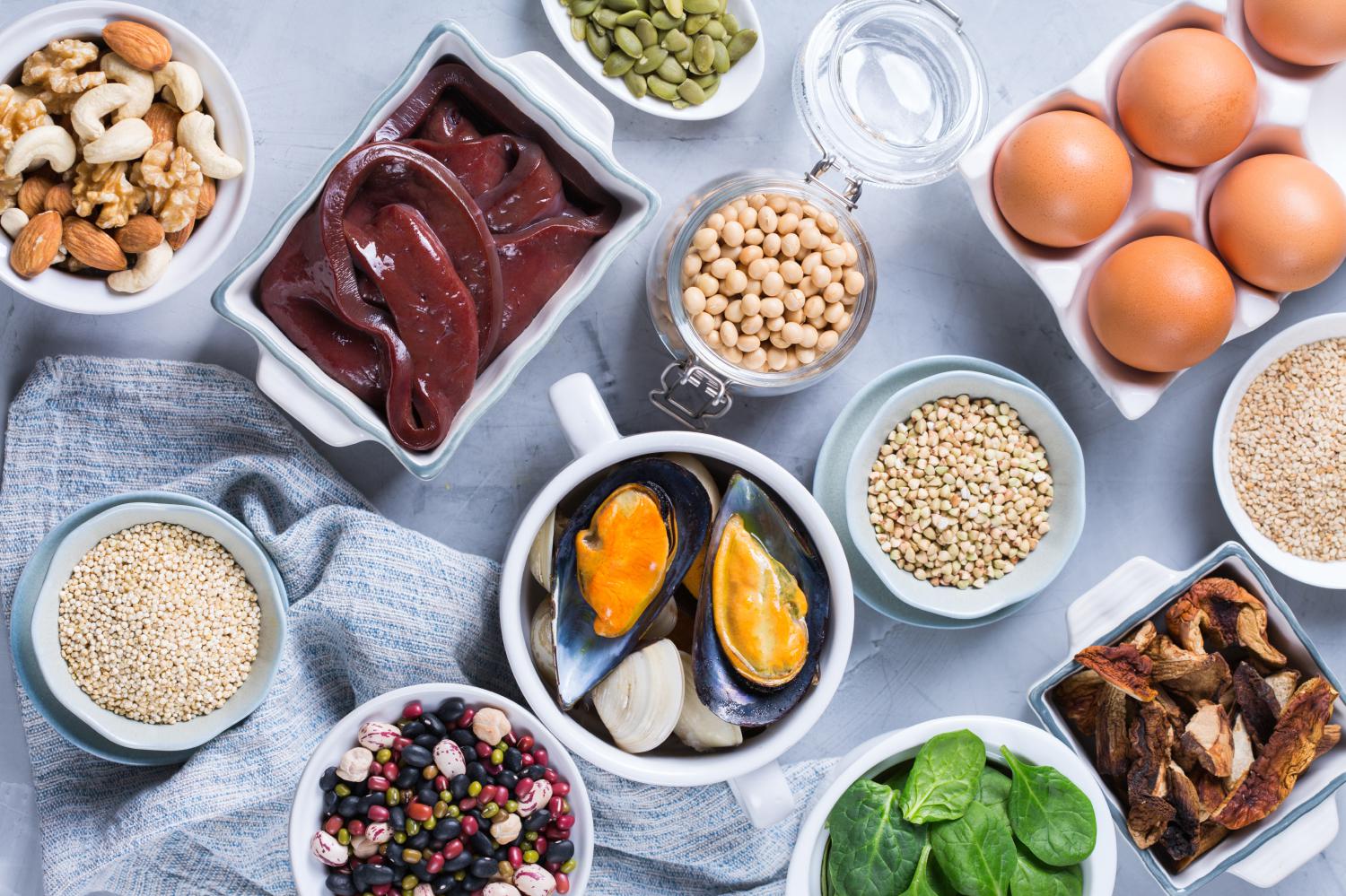
Any foods containing phytic acid salts (phytates) – beans, beans, lentils and nuts – should be well soaked
3. Eggs
One chicken egg contains 0.9 mg of non-heme iron (7). It has limited bioavailability due to phosvitin, a substance found in the yolk (8). In addition to iron, eggs contain more than 40 types of vitamins, a large number of micro- and macroelements, protein with amino acids.
4. Cereals
One serving of buckwheat (about 170 g) contains 1.3 mg of iron (9). Compared to seaweed, it seems that this is very little. But a portion of crumbly buckwheat can be eaten at one time, thereby providing the body with 7% of the daily iron requirement. Most often, it is buckwheat porridge that is remembered when it comes to iron deficiency. In fact, oatmeal contains even more of this trace mineral—2.1 mg per serving, about 170 g. (10).
5. Pomegranate
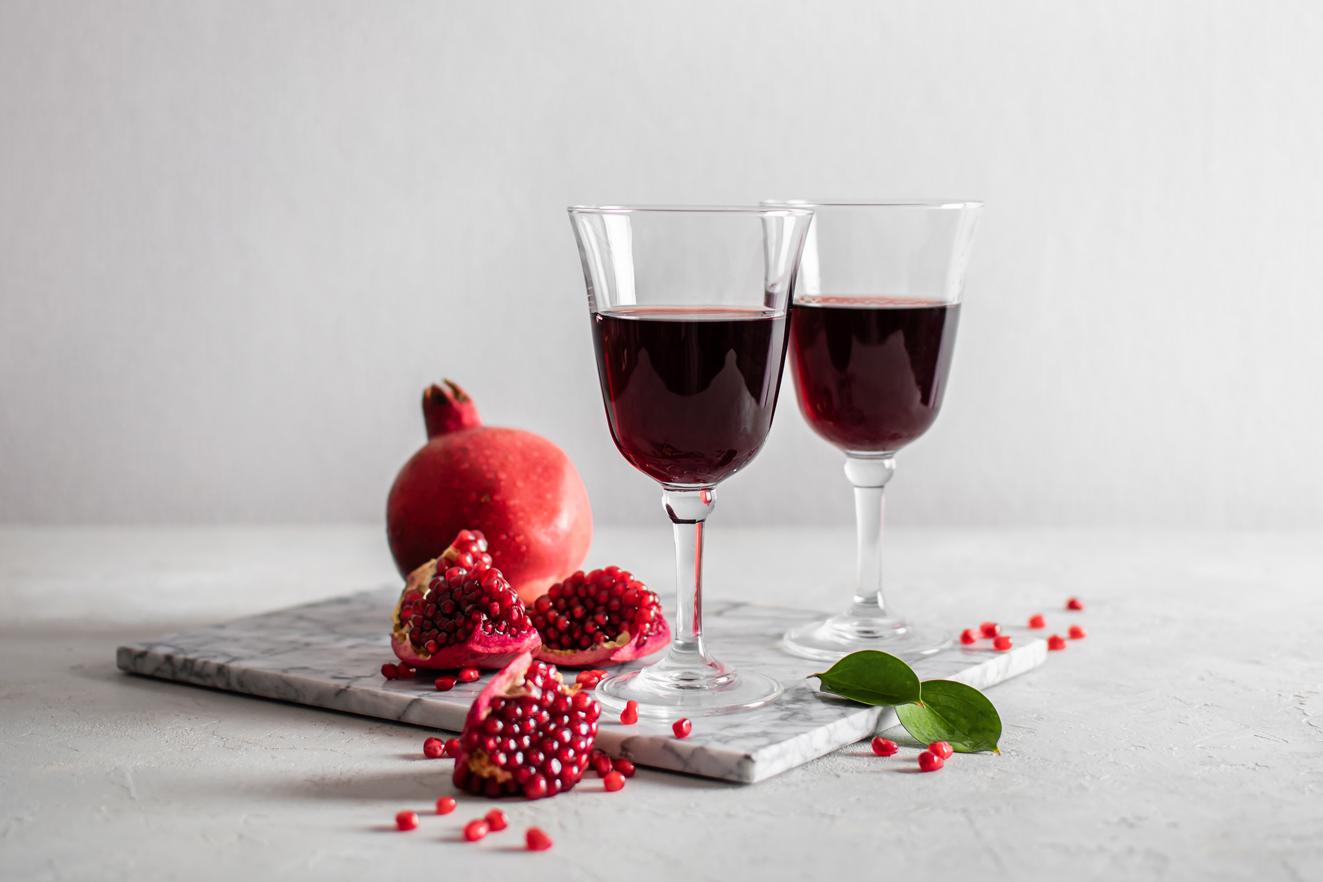
For symptoms of anemia, you should drink directly pressed pomegranate juice.
One pomegranate contains 0.9 mg of iron, so this fruit and its juice are recommended first for symptoms of anemia (eleven). It is enough to drink 250 mg of directly pressed pomegranate juice. Nectar made from concentrate is often sold in packages – it does not have the same beneficial properties as natural juice.
6. Legumes
There is a lot of iron in lentils – 6 mg per 100 g (12). The second healthy legume, peas, contains 2.2 mg of this substance per 160-gram serving (13). Legumes are also a good source of vegetable protein, which is especially important for a vegetarian diet.
7. Fruits and greens
Apples are one of the most accessible sources of iron. Most of it is in dried fruits – 1.4 mg per 100 g (14). They are easy to take with you as a snack, add to breakfast or baked goods. The absolute record holder among plants for iron content is spinach: a cup of fresh greens contains 6.4 mg of the substance (15).
Apples are one of the most accessible sources of iron
8. Nuts and seeds
Despite their high calorie content, seeds and nuts are very healthy – they contain a lot of vitamins, microelements and unsaturated fats. Peanuts are especially valued as sources of iron – 2 mg per 100 g and pumpkin seeds – 2.1 mg per 64 g (16), (17).
According to Andrei Timofeev, despite the fact that the main source of iron for our body is food, if the decrease in hemoglobin in the blood is very pronounced, diet correction alone will not do. The doctor may prescribe tablets or droppers.
Products that lower hemoglobin
In case of anemia, you should consult your doctor. Some foods reduce iron levels in the blood and should be limited:
- fatty fermented milk products;
- Fig;
- green and yellow fruits and berries, especially plums, currants, gooseberries and pears;
- black and herbal teas with mint;
- pasta.
Diet rules for low hemoglobin
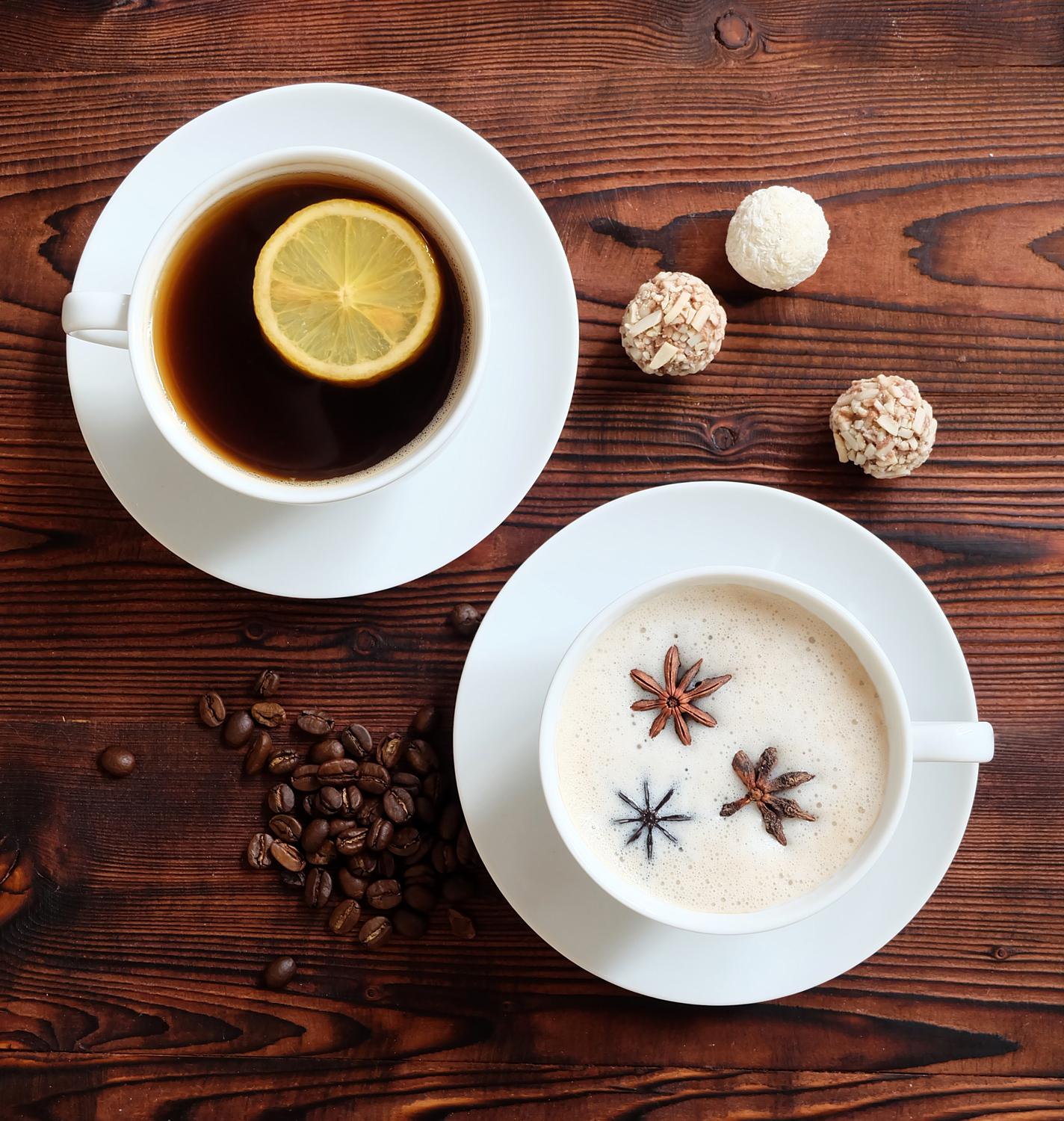
Iron-containing foods should not be taken with coffee or tea.
In addition to the set of foods that should be used to diversify your diet, it is important to consider their interaction with each other, with drinks and medications. Elena Ostrovskaya advises that you should not combine foods rich in iron with those rich in calcium at one meal: “If you take any iron supplements or iron supplements, it is better to take them either an hour before meals or two hours after.
Iron-containing foods should not be washed down with coffee and tea; you can drink these drinks only a couple of hours after eating rabbit, liver or other iron-rich foods. You should try to combine iron-containing foods or iron supplements with foods rich in vitamin C, or with ascorbic acid preparations and supplements.
A person with elevated hemoglobin levels should limit copper-rich foods and not eat them with iron-rich foods. You should not combine iron-containing foods with flour products, sweets, fatty and sweet foods, for example…
